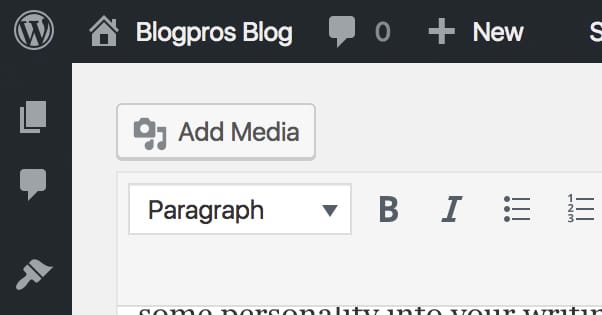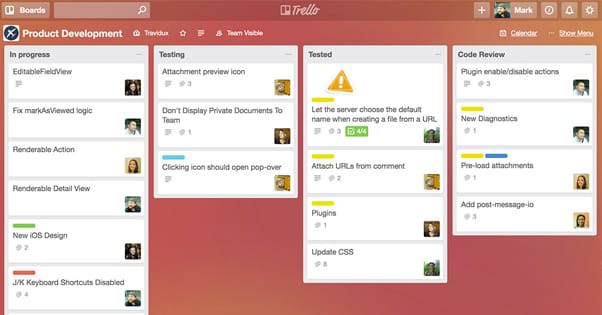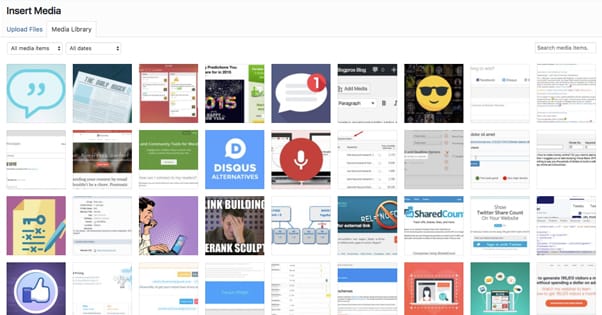30 Ways to Write Blog Posts That Users Will Find Interesting
Published by James Parsons • Content Marketing • Posted August 24, 2017 ContentPowered.com
ContentPowered.com
Do you ever find yourself having trouble writing blog posts that people actually like? Anyone can pick a topic and write a few thousand words, even if some topics are harder than others. The question is, does anyone care? Does anyone actually read those posts? How can you get people to actually pay attention to what you’re writing?
1. Format Your Writing for Skim Readers
The best tip I can give you is to write as if your readers barely skim what you’re putting down, because that’s basically all they do. Frequent sub-headings, short paragraphs, short sentences, lists, bullet points; all of these formatting tricks help readers get more value out of your posts. You should also front-load your value in each section. If someone is looking for a specific piece of information, they’ll skim until they find it, and only then will they read more for the larger context.
2. Bring a Casual Personality to Your Writing
I know when I’m reading a blog post and it’s all staunch corporate speech and ultra-formal writing, my eyes glaze over and I black out for a few seconds while my autonomous nervous system automatically causes me to click the back button. It’s a problem, but it’s one you can solve as a blog writer by injecting some personality into your writing.
3. Make Heavy Use of Media
Opinions differ on how often you should use media in your posts. In my mind, you should always have something on screen, even if it’s just a little at the top or bottom. That might mean an image every few hundred words, or a couple images and an embedded tweet here and there, or a video at the top and screenshots along the way, or what have you.
The point is to break up the text as much as possible and inject flavor, value, or sources via media.
4. Avoid Excessive Promotion
Most blogs have promotion laced throughout. They have related post plugins, they have sidebars with ads for ebooks, they have chat plugins or slide-ins that ask questions for the skeptical user, they have exit intent pop-overs, and more. No one needs blog posts also dedicated to your products or services. A few minor, relevant calls to action here and there can be fine, but you should never write a top 5 list of products and put yours at the top.
Every blog post should have a point of some kind. Some of them will fall into the “teach the user something” category, and that’s the next tip on this list. Most, though, should be “help the user do something.” It might be how to write a better blog post, or it might be a tutorial for some business process, but the user should be able to walk away with either new knowledge or a new skill.
If you can’t teach the user how to do something, teach them a useful piece of information. For example, did you know that it’s harder to gain traffic for basic informational queries these days? It’s because Google has been creating their informational boxes to provide facts up front, without the user needing to visit a site at all. You can read more about different types of queries here.
7. Follow Up on User Comments
For the first week or two after you publish a post – and longer, if the post goes viral or gets a second wave of attention – you should pay close attention to the comments.
Some will suck, but some will be useful information. If something particularly good comes around, add it to your main article with your response. If it’s not quite worth that level of approval, simply respond in the comments yourself. The more activity you can encourage, the more you’ll hook your readers.
8. Quote Experts in Your Niche
You’re not the only one in your niche or industry, and you’re probably not the top dog either. Even if you are, you can always learn from others. Keep an eye on what the influencers, thought leaders, and peers in your niche are saying. Quote them and their posts in your content, both to show that you keep an eye on your niche and to attract them for future conversation.
9. Create Step by Step Tutorials
One of the most sought-after types of content on the web is the how-to article. Thousands of sites and businesses have sprung up around providing that kind of information as a service, from recipes to tech tips to car repairs. By providing tutorials – for your products and for others that your users will find useful – you can create excellent evergreen content.
10. One-Up Industry Lists
List posts are a little passé, but they work. That’s why I’m writing one right now, and why you’re reading one right now.
They’re an excellent format for skim readers, they can push through a lot of content in a short amount of space, and they’ve been done a lot before. My secret tip is to find lists people in your industry have written that are out of date or old, and update them. They write a top 10, you write a top 20.
11. Make Broad Resource Link Posts
I like the “ultimate guide” style of post, where you cover a topic from a broad overview sense. Each section of the overview links out to informational posts and resources, both on your own site and on other sites owned by industry greats. I could write a damn good one with our resources on SEO and those of the big name sites on the web as well, for example.
12. Make Useful Memory Checklists
Sometimes a topic isn’t really suitable for a tutorial or a how-to article. These are cases where you can cover the topic from the ground up with a checklist. Make it sort of a “don’t forget to do X, Y, and Z” list that can benefit newcomers and veterans alike.
13. Review Industry Tools and Products
There are likely all sorts of tools and products that see use in your industry. Even if you don’t use them yourself, you can take the time to buy a month of service or purchase a product and get some use out of it for a review.
The key is to have actual, real usage information that users can find useful in making their decisions. Pay special attention to what you get for the price, what limitations it has, and what you found its best features were.
14. Make a Controversial Stand
Controversy can drum up a lot of attention, but it has to be the right kind of controversy. It’s fine if you want to say you support one sports team over their rival. It’s fine if you want to say maybe Moz’s Domain Authority isn’t the best metric. However, more controversial or very sensitive issues should be avoided.
15. Develop a Compelling Infographic
Infographics can be a great way to present a lot of information in a short, easy format. A quick blog post that explains them can go a long way towards adding context as well. You just need to make sure your infographic has some great graphic design, not just some bar graphs and line charts thrown together in Paint.
16. Interview Industry Authorities
One way you can get some incredible value for your site, as well as start up a relationship with someone else, is to set up an interview. Pick a topic, find an authority on that topic, and come up with some detailed questions. Then pitch them the interview and set up a meeting or call. Ask your questions, have a conversation, record it all, and prune it down into a good blog post later.
17. Create an Ongoing Article Series
A lot of your ideas you might find lend themselves to being revisited or continued on a repeating basis. Rand Fishkin does his annual SEO predictions, analyzing the last years’ and making new predictions for the future.
Moz also does Whiteboard Fridays, which center around a theme. In both cases, they’re a reliable way to fill a slot in your content calendar.
18. Don’t Write Too Basic
Keep your audience in mind. You wouldn’t walk into a room full of investment bankers and start explaining what currency is, would you? I mean, it would be pretty funny. If you can set up that kind of meeting, you could probably get a bunch of YouTube videos by filming it. The point is, if you’re supposedly marketing for an advanced audience, don’t write baby’s first article on the topic.
19. Don’t Write Too Advanced
Just like you don’t want to write your content at a basic level for an advanced audience, you should strive to avoid writing advanced content for a basic audience. If people are coming to you for a guide on the absolute basics of SEO, you don’t want to get into the deep details of how to build a private blog network, how to optimize anchor text, or any other advanced technique. You want to start simple.
20. Write from the First Person
Using I or We for your posts gives them a more casual atmosphere, and it makes users feel as if you’re talking directly to them. You generally want to avoid impersonal writing, in favor of being personable.
21. When in Doubt, Cite Data
Sometimes you want to add more to your posts but can’t figure out where to add it. In my mind, one of the best things you can do is add sources and data.
Where did you get your opinions? Where did you find that fact? Often times you can cite an opinion and then go out to find actual data to back it up. It gives your posts more depth and authority.
22. Provide Real Life Stories and Use Cases
One trend you see in a lot of food blogs, among others, is starting off with an anecdote. It might be a short story about their day, or a bit about when they made a recipe in their childhood, or something similar. A nice anecdote adds some personality and continuity to your blog posts that can go a long way towards hooking repeat readers.
23. Cover Current Events from Industry Perspective
Whenever something happens around the world, there’s potential for it to impact your industry. Keep an eye on the news. It can be a good thing to be one of the first people pointing out that a flood in Taiwan can hurt your supply chains, or that global economic trends might be leading to a bubble, or whatever other relevant hook you can find.
24. Have a Point to Your Writing
One thing a lot of bloggers lack is the natural flow of a blog post. You might say “I want to cover X topic” but you lack the agency that moves from point a to b to c all the way to the conclusion. I recommend creating outlines and rearranging subheadings until they have a logical flow to them.
25. Use Basic Formatting
Formatting helps a lot for skim readers and for pointing out good information buried deeper in paragraphs.
You want to break your writing up into paragraphs, and you should use the basic formatting options of underline, italics, and bolding for crucial points. Conversely, avoid color highlights in your text.
26. Write as Long as You Need
A lot of people recommend specific word lengths for blog posts, and then others fire back with counterexamples that should be penalized but instead go viral. Personally, my broad recommendation is anything over 1,000 words. From there, simply write as long or as short as you need to cover your topic in adequate detail. It eliminates excess fluff and avoids cramming under-explained points into a hurried article.
27. Solicit User Questions and Feedback
It can be a good idea to end your posts with questions to encourage comments, but you can also use methods like your mailing list or pop-overs to solicit feedback. From there, you can answer specific questions your users have in blog posts, and you can address their pain points; a two for one combo!
28. Respond to Trending or Viral Content
Similar to paying attention to current events, you also want to pay attention to what is gaining traction in your industry. You can combine this with controversy for a slick double-play. Moz posts an article about why you need to care about X, you write an article about why you probably actually don’t, and let it go from there.
29. Split Large Topics into Multiple Posts
When a single topic stretches on too long, feel free to chop it up into two, three, or even more posts. Not only does this bring in repeat readers, it gives you more to fill your editorial calendar, and you have more space to cover each topic in detail compared to trying to write them all as one.
30. Start and End on a Question
Start on a question that you then carry forward to answer. Then end on a question, for your readers to answer and that can carry on to a next article. What would you like to see me cover next?












